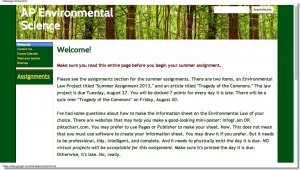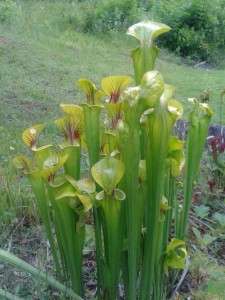I think there are many ways for me to use the technology introduced at NCCAT last week.
There were a lot of interesting new ways to immediately access student learning. I will probably use padlet and socrative to anonymously communicate with my class as it’s happening.
I require an Environmental Law Infosheet for part of my students’ AP Environmental Science project. I have included on my class website two of the three infosheet websites suggested in one of the Kenan talks as possible assistants for my students’ projects. I hope some of them will use these resources.
Frankly, though…the most useful thing was to talk with other positive, like-minded teachers. There is too much negativity in teaching. I am lucky that we don’t have as much at my school as there seems to be in others. Still, a week with people who are intent upon improving their best practices by collaboration and discussion is worth more than anything else to me.
Well, that and rafting. (:

